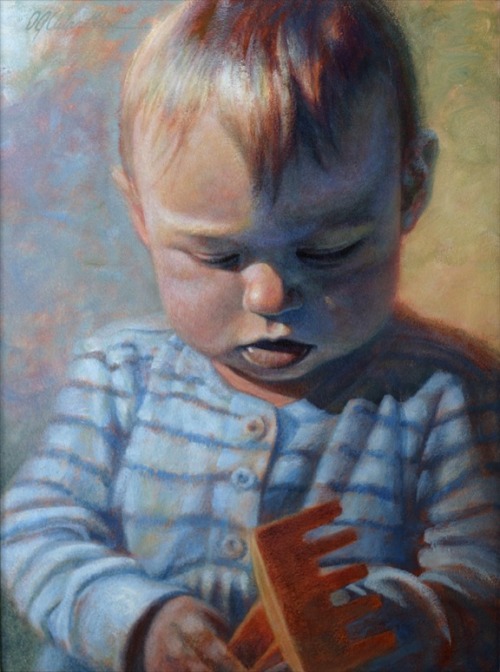
“Japanese Lady With Fan”, George Henry (1858-1943)
Here’s a lovely painting that I’ve admired for years. What I most respond to in this piece is the wonderful marriage of abstract and realism. George Henry, a Scottish painter, masterfully designed a beautiful, rich canvas with varied colors and edges. For a relatively small painting, there is much to keep the viewer’s eye engaged, and the entire painting has a lovely decorative quality about it.
Quite magically, we begin to realize the head of a geisha has been placed right in the center of the image. Her head is turned away in a demure fashion that enhances the mystery and intrigue of her character. It is also a clever device to help the artist keep readily identifiable features of her face from taking away from the overall abstract quality.



